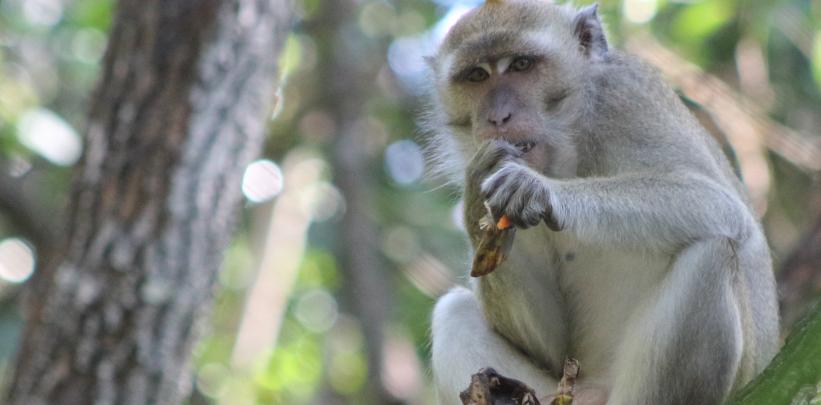Inside Story: A Jungle of a Classroom
The Maliau Basin is a remote, pristine rainforest in Malaysian Borneo, one in which you’ll find some of the rarest flora and fauna in the world. Every year since 2013, Unitec students from the Bachelor of Applied Science have gone there to study for a two-week credit bearing course, conducting field studies comparing the biodiversity of this pristine jungle with nearby forest regenerating after selective logging.
Bevan Smith was studying Animal Welfare Management when he went there in January 2016. He recalls sitting with guides and learning how to identify specific species among the myriad of bird calls. “We must have heard about 50 different birds in half an hour. The Helmeted Hornbill makes the strangest sound. It sounds like a monkey, but it was a bird! Another day I saw it fly overhead and I could see how magnificent and giant it was. It’s close to extinction, so it was incredible to see that.”
The trip to Borneo has helped nurture an appreciation of biodiversity, he says, as well as the importance of looking after it. “When you fly over this area you see this rich forest, and then the huge contrast of that to the deforested area. Seeing that first hand was invaluable. You can learn about what we’re losing, but you don’t really understand it until you’ve seen it.”
It’s also made him more alert to bird sounds. “Now I hear the Grey Warbler, Silver Eyes, Kingfishers … It taught me to open my ears.”
Johanna Neuhauser, who was also studying Animal Welfare Management, says going to Borneo was inspiring and eye-opening. “We’d done the theory in class and now we had the chance to apply it. So it was good to see what worked and what didn't and how to fix it.” They had to adapt to unfamiliar circumstances, such as monkeys stealing the bait from their insect trap, which challenged the students to think fast to find a resolution. . . “That was the main thing, coming up with our own methodology with limited resources, trialing everything and then presenting work you were proud of,” she says.
Senior Lecturer in Environmental and Animal Sciences, Glenn Aguilar, who will lead the expedition in 2017 describes it as an “amazing experience.” Students are likely to see birds such as the Scarlet-rumped Trogon and several species of Hornbill, Leaf Monkeys, Macaques and Gibbons, bearded pigs and all sorts of vividly coloured invertebrates such as Empress cicadas and Forest Scorpions.
Glenn went in 2016 and recalls finding a bat nestled in a pitcher plant; the bat and the plant have an unusual symbiotic relationship, in which the plant is fed by the bat’s excrement and the bat gets a home in exchange. They also saw a herd of Pygmy Elephants, a very rare endangered species - the World Wildlife Fund estimates that there are only 1500 left. He and the students had to make a hasty retreat after they began to charge them, as he explained:
“It’s not just sight-seeing. Students get an opportunity to learn how to apply what they’ve learned in the classroom a very different environment, how to gather data while dealing with the heat, the humidity, the leeches, no Internet ...
“With so many flora and fauna disappearing from the planet, encountering endangered species and being immersed in a threatened habitat does a lot more to motivate biodiversity management and conservation than classroom studies, lectures or YouTube,” says Glenn.
“[The students] are exposed to the practical nature of field work in a very different environment. It gives them an experience they won’t find anywhere else.”
The research experience is made possible through the South East Asia Rainforest Research Partnership (SEARRP), which provides local guides to work with the students, to help them find their way around the forest and teach them about the plants and animals around them.
Read about New Zealand's biosecurity and conservation goal to be predator free by 2050.
Animal Health and Welfare Study Animal Welfare Management Order Study Guide
